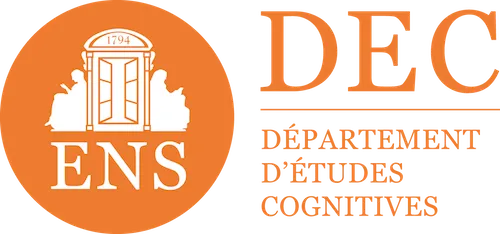

Blended learning: combining face-to-face and digital with efficiency
In a context where vocational training must adapt to varied work rhythms, to the geographical dispersion of teams and to ever stronger educational expectations, blended learning, or blended learning, is an effective and flexible solution.
By intelligently combining face-to-face and online learning, this hybrid approach makes it possible to design training courses adapted to the needs of businesses and learners.
Find out why blended learning, supported by the Didask LMS platform, is now an essential tool for strengthening business skills.
Blended learning: what is it?
Blended learning, or blended learning, is a training model that combines face-to-face modalities with remote sessions, most often via an LMS platform. The objective? Leverage the educational benefits of each format to provide effective, flexible, and engaging training.
This system is a concrete response to the new challenges of vocational training: diversity of learning profiles, needs for autonomy, rapid increase in skills or even organizational constraints.
What are the characteristics of blended learning?
Blended learning is based on a fluid link between synchronous learning times (face-to-face, virtual classroom) and asynchronous learning (e-Learning courses, videos, quizzes, resources to be consulted at your own pace).
Here are some key features:
- Complementarity of formats : face-to-face for exchanges, practice, collaboration; digital for flexibility, personalization and access to varied content.
- Flexible courses to adapt to the constraints of employees.
- Modularity : courses are often divided into educational modules, facilitating the anchoring of knowledge.
- Personalization with adaptive learning and tools like the AI assistant integrated into some LMSs.
The choice of these different pedagogical modalities depends directly on the learning goals and the target audience of your training.
What are the benefits of blended learning?
The benefits of blended learning are numerous for businesses as well as for learners:
- Flexibility in learning times and places : employees advance at their own pace on digital modules.
- Educational effectiveness : thanks to adaptive learning, each learner follows a course adapted to their needs.
- Strengthened involvement : alternation between formats to limit fatigue and encourage engagement.
- Saves time for the trainer, which can focus on activities with high added value.
- Real-time efficiency measurement via the monitoring tools integrated into the LMS tool.
- Reduction in logistics costs, with fewer trips or rooms to mobilize.
What are the disadvantages of blended learning?
Despite its many advantages, blended learning requires good preparation:
- Demanding instructional design : the course must be structured in a coherent way, by choosing the modalities wisely.
- Technical skills to master : for trainers and learners who are uncomfortable with digital tools.
- Risks of disengagement if digital content is poorly designed or too disconnected from in-person moments.
That's why a solution like the Didask platform, with its Author tool and its results-oriented approach, makes it possible to build robust and motivating blended learning courses.
Blended learning courses: for whom?
Blended learning is for all companies and training organizations who want to:
- Offer a modern and efficient training offer to their employees.
- Develop key skills by combining efficiency and accessibility.
- Train employees who are geographically dispersed, while maintaining a part of human interaction.
Whether you are an SME, a training organization or a large company, you can take advantage of blended learning to structure your courses, manage your educational resources and achieve your skills development goals.
Didask and blended learning courses
Key steps in blended learning
On the Didask LMS platform, blended learning training can be structured into several key steps:
- Online preparatory phase (diagnostic quiz, introductory content)
- Face-to-face sessions or virtual classroom (workshops, practice, exchanges)
- Remote consolidation modules (exercises, videos, case studies)
- Final assessment and certification
Throughout the training, The AI assistant by Didask guides learners, facilitates navigation and ensures a better user experience.
Monitoring and measuring the effectiveness of blended learning
Thanks to the platform's monitoring and reporting features, you can:
- Track course completion rates.
- Evaluate individual and collective progress.
- Identify bottlenecks with educational AI.
- Adapt your courses in real time via the authoring tool.
Blended learning: managing pedagogical coherence
The success of blended learning is based on educational coherence between the digital phases and the face-to-face moments.
To do this, Didask offers:
- A clear interface for learners and trainers.
- Interactive and customizable educational content.
- Centralized resource management
- One training catalog Didask
- Strategic support to integrate the mixed model into your training plan.
What are the differences between hybrid and blended learning?
While the two terms are sometimes used synonymously, there is one nuance:
- The Blended Learning is an instructive model designed from the start to articulate digital and face-to-face.
- La hybrid training, on the other hand, often refers to an adaptation of an existing model (often face-to-face), to which digital modules are added more occasionally.
At Didask, blended learning is designed as a coherent journey, focused on the skills objectives and the most relevant modalities at each stage.
Blended learning vs e-learning: what are the differences?
Blended learning is not just e-learning. E-learning is 100% online, with no physical interaction. It focuses on the autonomy of learners, but can sometimes suffer from a lack of support.
Blended learning, on the other hand, is based on the alternation between online and face-to-face learning: it combines the effectiveness of digital technology with the richness of human exchanges. It thus allows for a more complete learning experience, thanks to strengthened social interactions and better monitoring of progress.
Blended learning is emerging as the flagship modality of modern vocational training. It makes it possible to reconcile educational effectiveness, flexibility, learner engagement and monitoring of results.
Thanks to a solution like Didask, enriched with its authoring tool, its educational AI and its AI assistant, companies can deploy efficient hybrid paths, adapted to the current needs of employees.
Make an appointment directly with our eLearning experts for a demo or simply more information.













